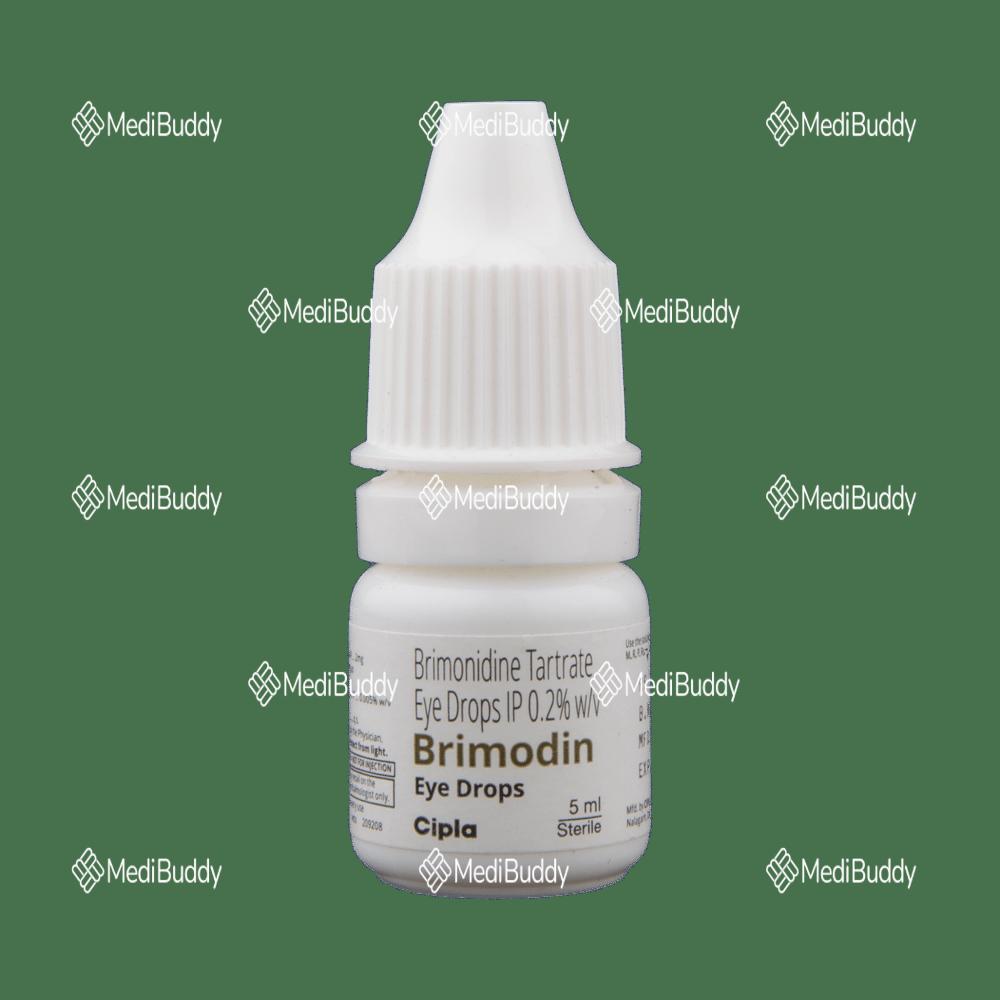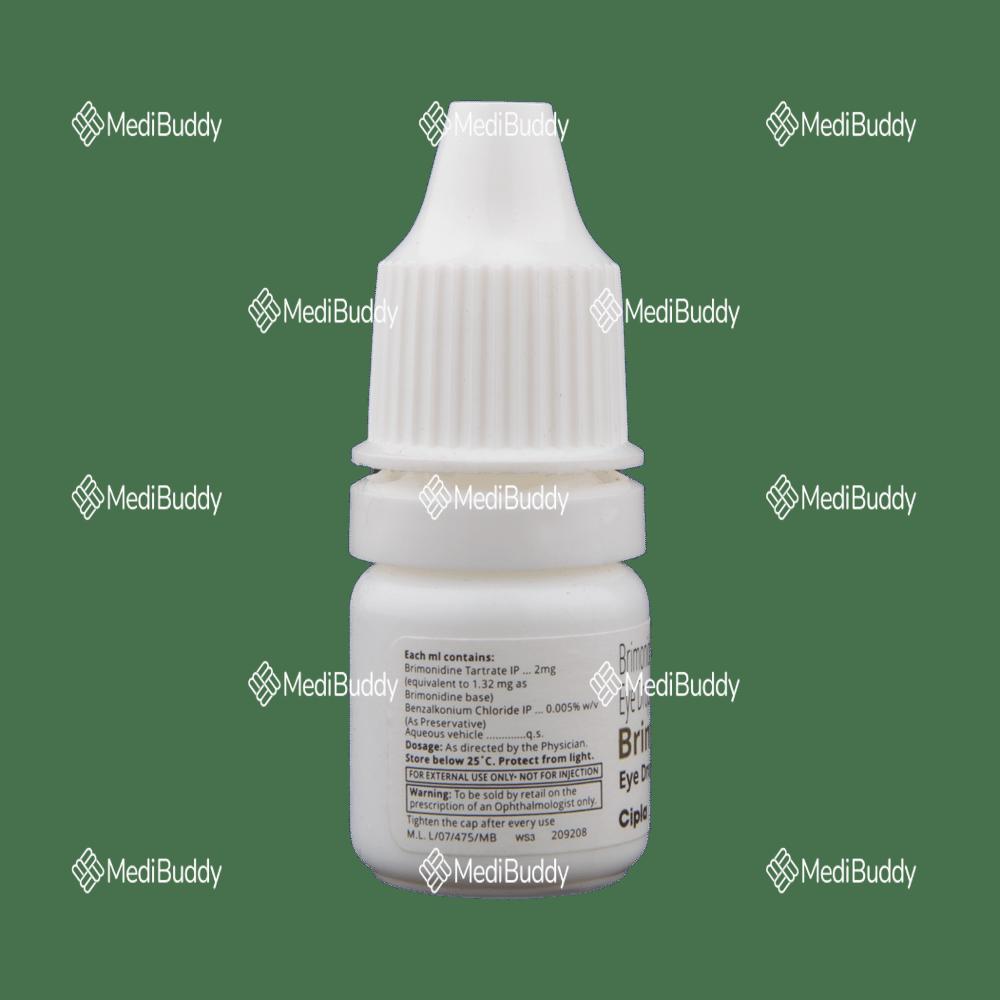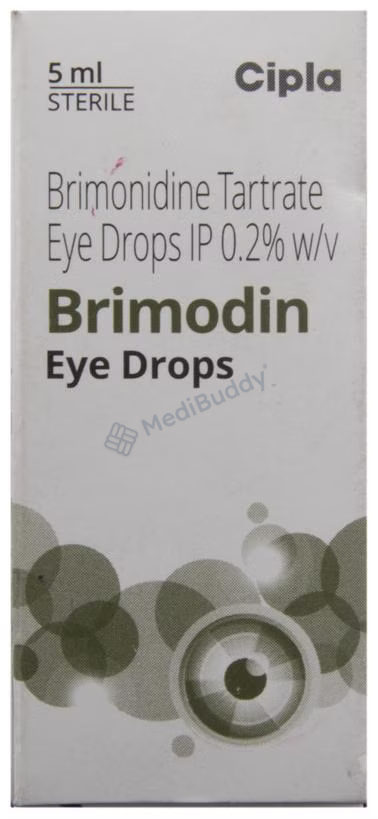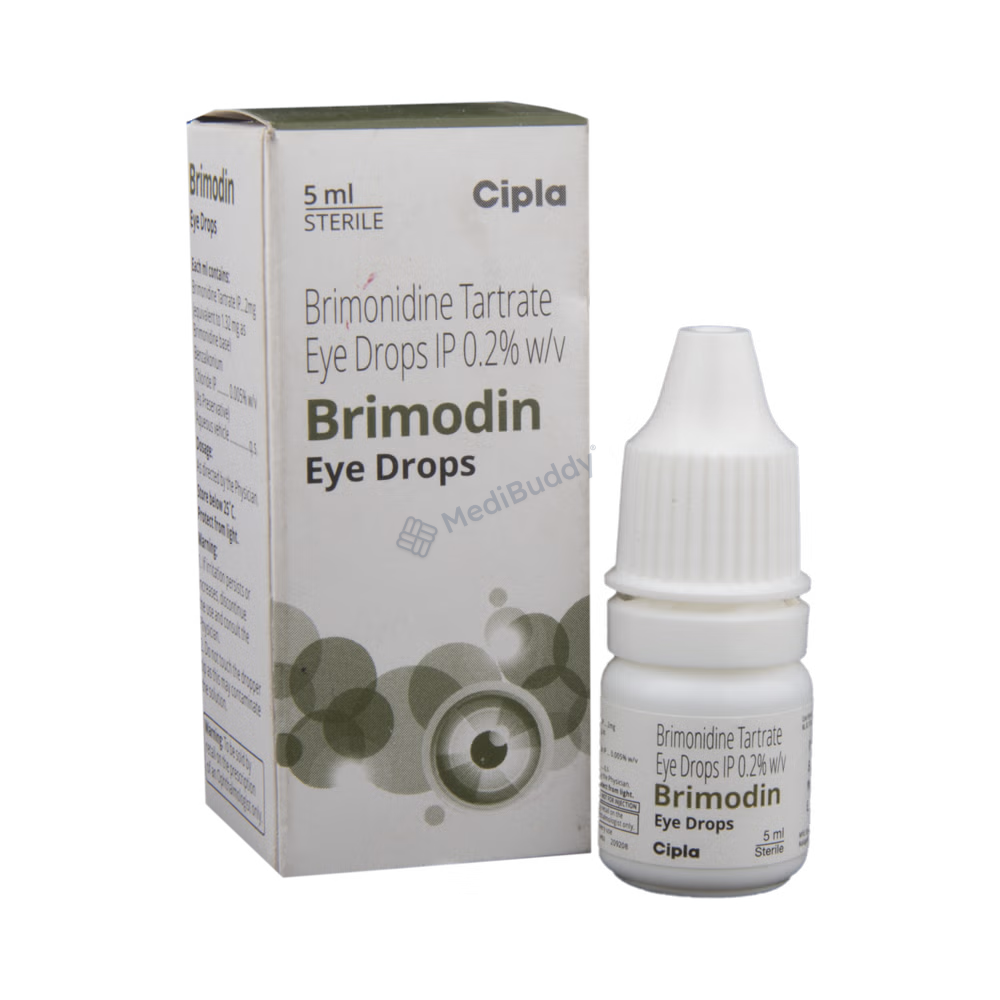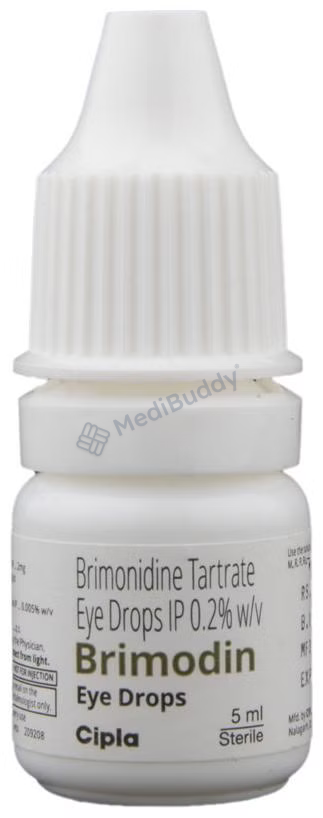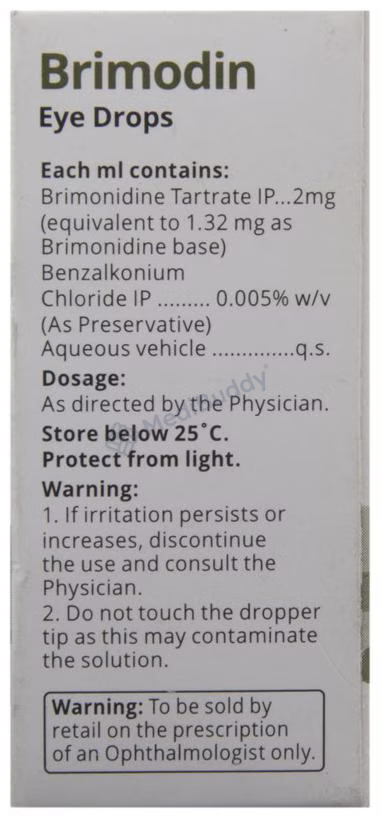Brimodin Eye Drop
By Brimodin
Rx
5ml Eye Drop in a Bottle

Composition
Brimonidine(0.2% w/v)

Manufacturer - Cipla Ltd
Cipla House, Peninsula Business Park, Ganpatrao Kadam Marg, Lower Parel, Mumbai-400013

Expires on or after
October, 2026

liver
There is no established interaction concerning the use of Brimodin Eye Drop and liver issues. It is important to follow the recommended dosage and directions provided by your healthcare professional when using this eye drop. If you have any concerns or experience any unusual symptoms related to your liver while using Brimodin Eye Drop, consult your healthcare provider promptly.

kidney
Consult with your doctor for proper guidance before using Brimodin Eye Drop.

alcohol
No interaction has been found or established between alcohol and Brimodin Eye Drop. It is advisable to consult your doctor regarding alcohol consumption while using this medication.

driving
When using Brimodin Eye Drop, be cautious before driving. Side effects such as blurred vision may impair your ability to drive, especially at night or in low light.

pregnancy
Brimodin Eye Drop is generally safe for use during pregnancy. Animal studies indicate minimal risk to the developing baby, yet human studies are limited. Consider consulting a healthcare provider for further guidance.

breastfeeding
Brimodin Eye Drop is likely safe during breastfeeding. Limited human data shows no significant risk to the baby. To lessen exposure via breastmilk, press the eye's corner and remove extra solution with a tissue.
| Habit Forming | No |
| Chemical Class | Quinoxaline Derivative |
| Therapeutic Class | - |
| Action Class | Sympathomimetics- Ocular |
₹303.55
Inclusive of all taxes
Content verified by

Dr. Abdullah Khan
MBBS - General Medicine
Last update on 01-Oct-2024



